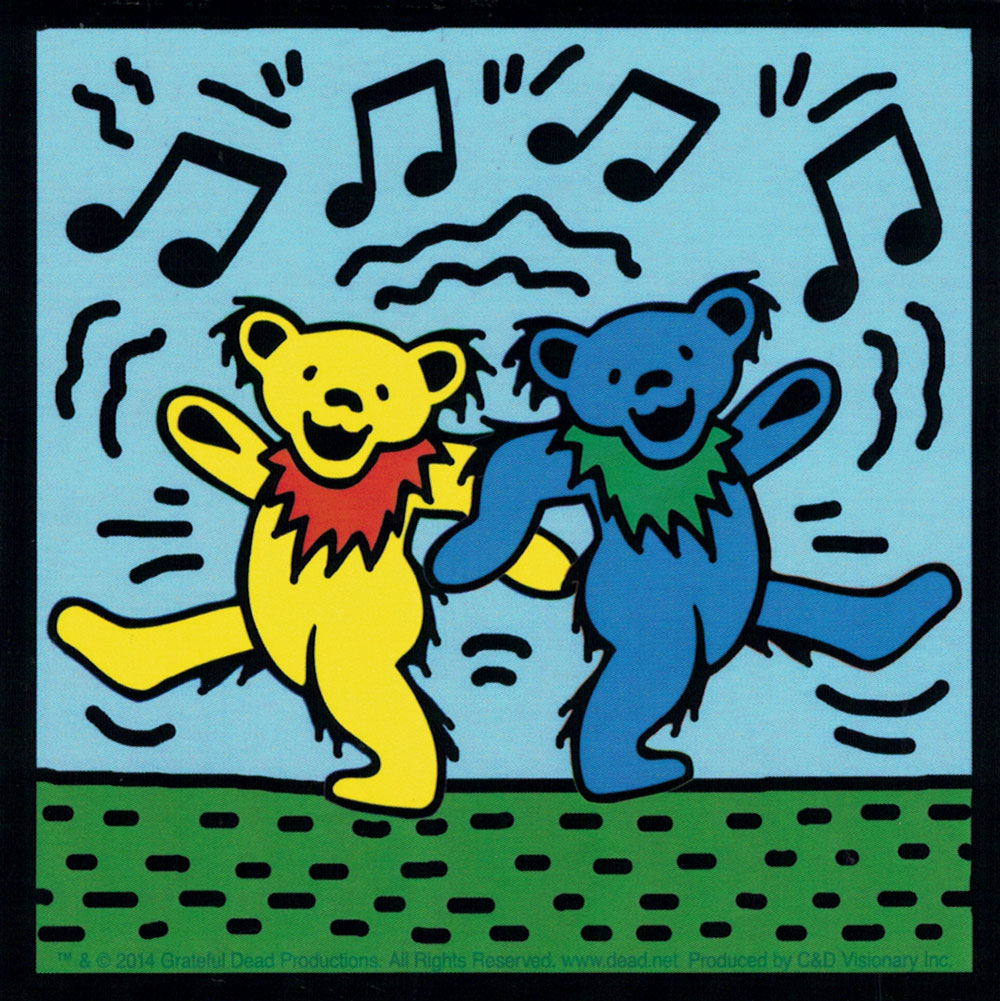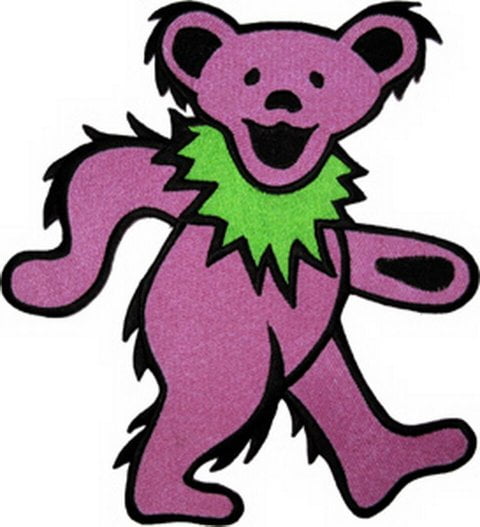

And if you're a deadhead, LSD user, or just an art lover, the Dancing bears Bearbrick have to be in your collection. The dancing bears have become deeply ingrained in the culture surrounding the Grateful Dead, and have taken on layers of symbolic meaning over the years. The Dancing Bears were initially designed by artist Bob Thomas to appear on the back cover of the band’s 1973 release, The History of the Grateful Dead, Volume 1 (Bear’s Choice). Medicom Toys working on another Grateful Dead Bearbrick, and this time it's a dancing bears pattern. This is the 1000% Bearbrick - Grateful Dead (Dancing Bears Pattern) by Medicom Toys.

Please keep in mind when ordering this figure the rest of your order will be held back until the order is complete! The cover art outshined the record’s boring title-most heads refer to it as Skull & Roses-and endures as another motif woven into the band’s art and design.The 1000% Bearbrick - Grateful Dead (Dancing Bears Pattern) by Medicom Toys is a pre-order and is estimated to arrive in the 4th Quarter of 2022 (This arrival date can be subjected to unforeseen delays > check all preorder ETA here). The fact that you can buy a Skull & Roses beach towel on Amazon may not be surprising to cynical retread shoppers like us, but it would likely shock Stanley “Mouse” Miller, who based his drawing for the cover of the band’s eponymous 1971 live album The Grateful Dead, from a book of poetry he found at the San Francisco library. Griffin would design album covers ( Without a Net, Wake of the Flood, et al.) and create special anniversary art for the band until his death in 1991. Comic artist Rick Griffin first used the Flying Eyeball motif in a poster for the Dead’s 1968 concert at the Shrine Auditorium and it lingered, making appearances on album covers like 1969’s Aoxomoxoa and on posters and any fan-generated artwork imaginable. The Flying EyeballĮgyptian imagery moves in and out of the Dead’s visual repertoire as fluidly and unpredictably as the band moves in and out of its setlist. Just like the traditional Dancing Bears but instead, they are skiing, snowboarding. Even some fifty years after they were drawn by artist Bob Thomas, they march on as cheerful brand ambassadors. An official Grateful Dead collaboration with Teton Gravity Research. Whether they’re dancing or simply high stepping, these happy bears have endured as mascots of the Grateful Dead experience. The lightning bolt splitting the skull asunder is a nod to a higher level of consciousness and the possibility of enlightenment, whether chemically induced or achieved by natural methods. Its name comes from a line in “He’s Gone,” a song about drummer Mickey Hart’s father, the band’s avaricious former manager who disappeared after embezzling their profits. Like the Dancing Bears, this logo is also attributed to Owsley Stanley, who helped design the Stealie in the late ’60s. To the uninitiated, it’s just a red and blue skull you still see on bumper stickers and the occasional tattoo to everyone else, it’s the Steal Your Face. Here’s a guide to some of the Grateful Dead’s most durable visual identifiers. Which means you’ll continue to hear, and see the Dead’s unlikely brand extension far and wide, and not just on LeBron’s hoodie. Whether it’s merely the cycles of fashion (eventually even Jennifer Lopez gets around to wearing tie-dye) or the fact that the Grateful Dead have carried on with some youthful recent hires- guitarist John Mayer and bass player Oteil Burbridge-the band’s cultural currency is enjoying a second, okay, probably closer to fourth, wind. So what dissonant cultural forces commingled to bring us LeBron in the Dancing Bears? Probably the same ones that put the Dancing Bears on a pair of Nike Air Force Ones this summer, and that encouraged the designer James Perse’s Grateful Dead-focused collection from last summer and inspired street photographer Mister Mort to publish this summer’s Dead Style.

He was only ten years old when Jerry Garcia, the Dead’s creative lead and reluctant patriarch, died of an overdose, and his pregame setlist veers more toward Meek Mill and 2 Chainz than the masters of American psychedelia. None of which explains LeBron’s affinity to the Dead. The dancing bear icon first showed up as stickers slapped on Bear’s amplifiers and other sound equipment. The Bear in question was Owsley “Bear” Stanley, the architect of the Dead’s distinctive sound and a pioneer in the production and distribution of early LSD. They’ve been showing up on bootleg t-shirts, bumper stickers, and even headbands since they first appeared on the back cover of the forgettable 1973 album The History of the Grateful Dead, Vol. The Dancing Bears, as they’re commonly known, are a staple of the Grateful Dead’s visual identity.


 0 kommentar(er)
0 kommentar(er)
